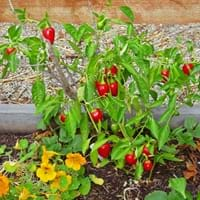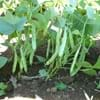Life Span
Perennial
Annual
Origin
Mexico, Central America, South America
Mexico, Central America, South America
Types
Bigleaf hydrangea, Hortensia, Smooth hydrangea, Oakleaf hydrangea, Annabelle
Not Available
Number of Varieties
Not Available
Habitat
Forest edges, Hillside, Woods
Open areas
USDA Hardiness Zone
11-15
Not Available
Sunset Zone
21,22
A1, A2, A3, H1, H2, 1a, 1b, 2a, 2b, 3a, 3b, 4, 5, 6, 7, 8, 9, 10, 11, 12, 13, 14, 15, 16, 17, 18, 19, 20, 21, 22, 23, 24
Habit
Prostrate/Trailing
Upright/Erect
Flower Color
Yellow
White
Flower Color Modifier
Bicolor
Bicolor
Fruit Color
Red
Red, Green
Leaf Color in Spring
Green, Dark Green
Dark Green
Leaf Color in Summer
Green, Dark Green
Green
Leaf Color in Fall
Green, Dark Green
Green, Black
Leaf Color in Winter
Green, Dark Green
Dark Green
Leaf Shape
Oblovate
Ovate
Plant Season
Spring, Summer, Fall
Spring, Summer, Fall
Sunlight
Full Sun
Full Sun
Type of Soil
Loam, Sand
Loam, Sand
The pH of Soil
Neutral
Neutral
Soil Drainage
Well drained
Well drained
Bloom Time
Indeterminate
Spring, Summer, Indeterminate
Tolerances
Drought
Drought
Where to Plant?
Container, Ground
Container, Ground
How to Plant?
Seedlings, Stem Planting
Seedlings, Transplanting
Plant Maintenance
Medium
Medium
Watering Requirements
Not Available
Do Not over Water
In Summer
Average Water
Lots of watering
In Spring
Moderate
Moderate
In Winter
Average Water
Average Water
Soil Type
Loam, Sand
Loam, Sand
Soil Drainage Capacity
Well drained
Well drained
Sun Exposure
Full Sun
Full Sun
Pruning
Remove damaged leaves, Remove dead branches, Remove dead leaves
Remove damaged leaves, Remove dead branches, Remove dead leaves
Fertilizers
All-Purpose Liquid Fertilizer
All-Purpose Liquid Fertilizer
Pests and Diseases
Red blotch
Not Available
Plant Tolerance
Drought
Drought
Flower Petal Number
Single
Single
Fragrant Bark/Stem
Yes
No
Foliage Texture
Medium
Medium
Foliage Sheen
Matte
Glossy
Evergreen
Semi-Evergreen
No
Attracts
Butterflies
Not Available
Allergy
Chest tightness, Diarrhea, Dizziness, Nausea, Vomiting
Hives, Rash
Aesthetic Uses
Not Available
Showy Purposes
Beauty Benefits
Not Available
Not Available
Edible Uses
Not Available
Yes
Environmental Uses
Air purification
Air purification
Medicinal Uses
Fever, Kidney problems, Urinary tract problems
cholesterol-lowering, Low calories, Vitamin C
Part of Plant Used
Flowers, Root
Fruits
Other Uses
Not Available
Used As Food
Used As Indoor Plant
Not Available
No
Used As Outdoor Plant
Yes
Yes
Garden Design
Container, Edible, Hanging Basket, Herb / Vegetable
Bedding Plant, Container, Edible, Herb / Vegetable, Mixed Border, Tropical
Botanical Name
LYCOPERSICON esculentum 'Siberian'
CAPSICUM annuum 'Cherry Bomb'
Common Name
Siberian Tomato
Cherry Bomb Pepper, Cherry Pepper
In Hindi
Hydrangea
Cherry Bomb Pepper
In German
Hortensie
Cherry Bomb Pfeffer
In French
Hortensia
Cherry Bomb Pepper
In Spanish
Hortensia
Bomba de cereza Pimienta
In Greek
υδραγεία
Cherry Bomb Πιπέρι
In Portuguese
Hortênsia
Cherry Bomb Pimenta
In Polish
Hortensja
Cherry Bomb Pepper
In Latin
Hibiscus
Cherry Bomb Pepper
Phylum
Not Available
Anthophyta
Class
Not Available
Eudicotyledones
Order
Not Available
Solanales
Family
Solanaceae
Solanaceae
Genus
Not Available
Capsicum
Clade
Not Available
Angiosperms
Tribe
Not Available
Not Available
Subfamily
Not Available
Not Available
Number of Species
Not Available
Not Available
Properties of Siberian Tomato and Cherry Bomb Pepper
Wondering what are the properties of Siberian Tomato and Cherry Bomb Pepper? We provide you with everything About Siberian Tomato and Cherry Bomb Pepper. Siberian Tomato doesn't have thorns and Cherry Bomb Pepper doesn't have thorns. Also Siberian Tomato does not have fragrant flowers. Siberian Tomato has allergic reactions like Chest tightness, Diarrhea, Dizziness, Nausea and Vomiting and Cherry Bomb Pepper has allergic reactions like Chest tightness, Diarrhea, Dizziness, Nausea and Vomiting. Compare all the properties and characteristics of these two plants. Find out which of these plant can be used as indoor plant. If you are interested to decorate your house and garden, find out aesthetic uses, compare them and select the plant which will beautify your surrounding. Along with beautification, try comparing medicinal and edible uses of Siberian Tomato and Cherry Bomb Pepper and you can choose the plant having best and most benefits.
Season and Care of Siberian Tomato and Cherry Bomb Pepper
Season and care of Siberian Tomato and Cherry Bomb Pepper is important to know. While considering everything about Siberian Tomato and Cherry Bomb Pepper Care, growing season is an essential factor. Siberian Tomato season is Spring, Summer and Fall and Cherry Bomb Pepper season is Spring, Summer and Fall. The type of soil for Siberian Tomato is Loam, Sand and for Cherry Bomb Pepper is Loam, Sand while the PH of soil for Siberian Tomato is Neutral and for Cherry Bomb Pepper is Neutral.
Siberian Tomato and Cherry Bomb Pepper Physical Information
Siberian Tomato and Cherry Bomb Pepper physical information is very important for comparison. Siberian Tomato height is 30.50 cm and width 60.00 cm whereas Cherry Bomb Pepper height is 61.00 cm and width 61.00 cm. The color specification of Siberian Tomato and Cherry Bomb Pepper are as follows:
Siberian Tomato flower color: Yellow
Siberian Tomato leaf color: Green and Dark Green
Cherry Bomb Pepper flower color: White
- Cherry Bomb Pepper leaf color: Dark Green
Care of Siberian Tomato and Cherry Bomb Pepper
Care of Siberian Tomato and Cherry Bomb Pepper include pruning, fertilizers, watering etc. Siberian Tomato pruning is done Remove damaged leaves, Remove dead branches and Remove dead leaves and Cherry Bomb Pepper pruning is done Remove damaged leaves, Remove dead branches and Remove dead leaves. In summer Siberian Tomato needs Average Water and in winter, it needs Average Water. Whereas, in summer Cherry Bomb Pepper needs Lots of watering and in winter, it needs Average Water.


